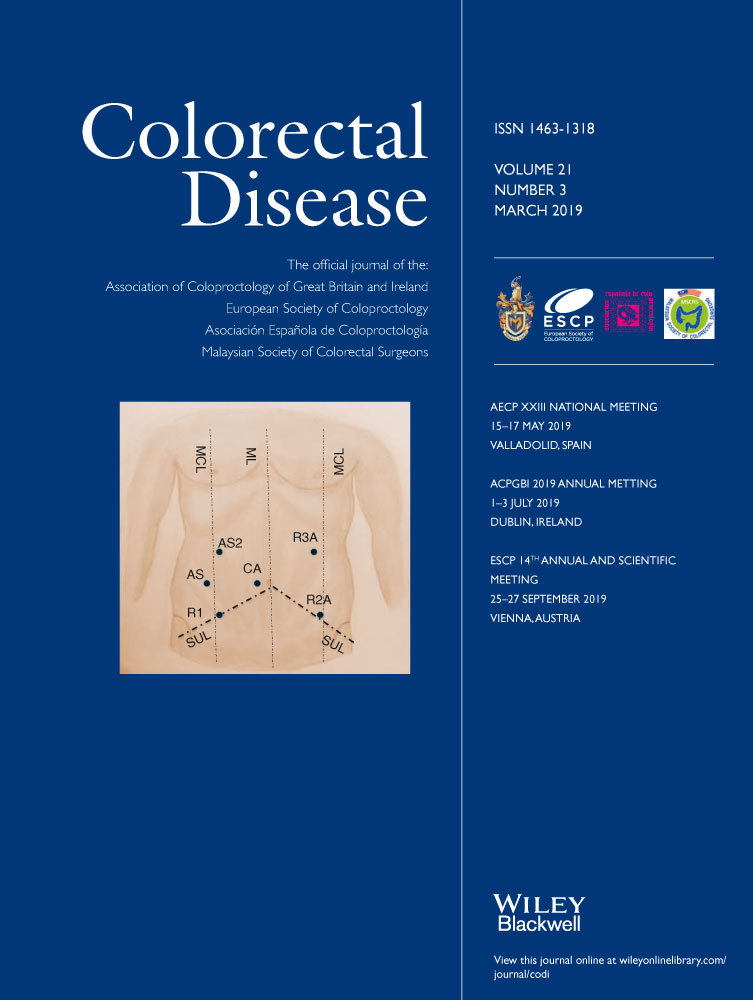Clinical benefit of high resolution anorectal manometry for the evaluation of anal function after intersphincteric resection
Abstract
Aim
Intersphincteric resection (ISR) is an advanced anus-preserving operation for treating low rectal cancer while avoiding colostomy. High-resolution anorectal manometry (HR-ARM) allows objective and accurate evaluation of anal function. However, correlations between anal function after ISR and HR-ARM parameters are unknown. The aim of the study was to evaluate HR-ARM for objective evaluation of anal function after ISR.
Method
A total of 81 patients who underwent ISR at our hospital between October 2014 and March 2016 were identified from our prospectively collected database and electronic medical records. Of these, 68 patients who had been evaluated using HR-ARM both before and after ISR were included in the study. Faecal incontinence (FI) was assessed by Wexner score. Multivariate analysis was performed to determine risk factors for severe FI after ISR.
Results
Maximum resting pressure (MRP) (P < 0.001) and maximum squeeze pressure (P = 0.04) were significantly lower after ISR, and MRP (P < 0.001) and maximum squeeze pressure (P = 0.02) were significantly lower after total (or subtotal) ISR than after partial ISR. The overall incidence of severe FI after ISR was 18% (12/68), and a high pressure zone before ISR ≤ 3 cm (P = 0.007) and MRP before ISR > 60 mmHg (P = 0.02) were independently associated with an elevated incidence of severe FI after ISR. Decreased preoperative MRP also correlated with severe FI after ISR (P = 0.008).
Conclusion
HR-ARM is reliable for the evaluation of anal function after ISR, and the high pressure zone and MRP may be useful preoperative predictors of severe FI after ISR.
Conflicts of interest
The authors declare that they have no conflict of interest.




